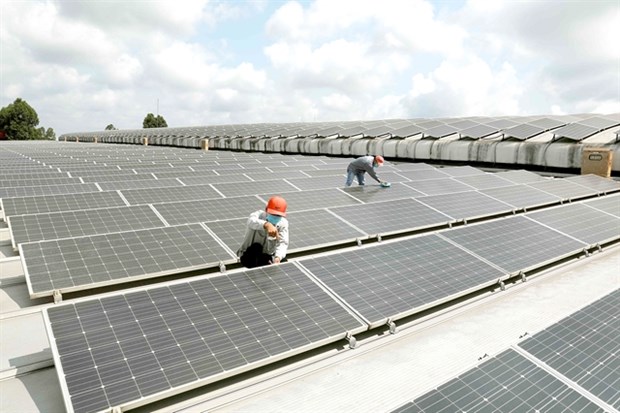23/02/2025, 02:00
Experts disagree with coal roadmap in Power Development Plan
The Vietnam Sustainable Energy Alliance (VSEA) raised concerns over the draft of the National Power Development Plan for the 2021 - 2030 period (PDP VIII).
The Vietnam Sustainable Energy Alliance (VSEA) raised concerns over the draft of the National Power Development Plan for the 2021 - 2030 period (PDP VIII).
As the draft still includes the use of coal power for 10 years and continues to extend its development to the 2045, VSEA’s representative said: “The option contains many risks and is not feasible."
Commenting on the draft, the alliance said it was a "setback", adding about 3,000 MW of coal power and reducing about 8,000 MW of renewable electricity by 2030.
VSEA's recommendation clearly stated that the concentration of traditional power sources for the current grid was only to ensure the stability of the current power system but would lose the opportunity to catch up and integrate globally, creating impetus for the country's advanced energy economy and green development.
VSEA said that though draft PDP VIII aimed for the development of power sources in reducing coal power and promoting the exploitation and use of renewable energy sources, the structure and expected development of power sources did not reflect the same idea.
Over the next ten years, there should be no more new renewable energy sources approved, according to the draft.
Though the VSEA recognised the current grid could not yet meet the development of renewable energy sources in Vietnam and managers must reduce capacity in many places, it said suppressing renewable energy was not the optimal solution.
The alliance said with rapid improvements in technology, solar power in Vietnam was able to compete with the cost of coal power production this year, while wind power was forecast to compete with new coal power by 2025.
Regarding concerns about solar power which generates electricity for six hours during the day and causes local overloading of the grid, the alliance said the matter will be overcome with solutions such as selling electricity on-site to factories, applying smart technology in power grid management and administration, upgrading the power grid and letting the private sector take part in public bidding to choose solar power investors.
While the draft PDP VIII increases coal-fired power to about 22,000 MW by 2030 and another 8,000 MW by 2045, VSEA said: “We believe that the feasibility of these projects needs to be re-evaluated based on actual access to capital, the development of these projects in the past and recent major changes in the industry as major financial sources for coal power in Vietnam have all been closed.”
VSEA added there were fluctuations of coal prices. The coal price in the first six months of 2020 was 98.8 USD per tonne but now it increased to 159.7 USD per tonne.
The alliance said: "With coal price increasing to 150-160 USD per tonne at present, electricity price ranged from 10-11 cent/kWh, more expensive than offshore wind power according to FIT at 9.8 US cent/kWh."
In conclusion, the alliance said PDP VIII should stick to the path of renewable energy development, avoid being hindered by recent renewable energy obstacles, adding instead of cutting clean electricity and avoiding dangerous coal power sources.
The alliance suggested the incentive mechanism has helped the solar power market in Vietnam grow from zero to about 17,000MW in two years, but in the current draft, the solar power industry in Vietnam will be strangled, causing a series of Vietnamese private enterprises in this field to close.
VSEA said, instead the Power Master Plan VIII should introduce solutions to encourage private participation in the grid and immediately consider researching and applying non-storage battery solutions.
On September 16, a seminar on the matter was held online. Nguy Nhu Khanh, Director of GreenID, also suggested reconsidering coal power projects with low feasibility and including solutions to encourage the private sector to invest in the power grid.
With the same view, Assoc. Prof. Dr. Le Anh Tuan, Deputy Director of the Institute of Climate Change Research, Can Tho University, also said the draft Power Plan VIII could "tighten" the green transition roadmap of Vietnam.
He said that Vietnam was trying to reduce greenhouse gas emissions, but the draft would increase coal power capacity and cut green and renewable energy, adding this will cause many impacts and consequences.
Tuan said: “Recently, the European Parliament voted to support the idea of imposing an emission tax on imported goods as the first step in creating a new technical standard that countries exporting goods to Europe, including Vietnam, adding the country must pay attention to or the local goods would be priced too high by a partner for emissions from the use of unfriendly energy."
Mai Van Trung, Vice President of Nami Energy, said the majority of exporters now face the challenge of using clean electricity in the total electricity usage capacity for export products.
In 2022, Vietnam's exports will be subject to a certain ceiling, which means that big brands will impose a proportion of renewable energy in export products. Therefore, in Power Plan VIII, priority should be given to the development of renewable and clean energy.
Speaking at the discussion, National Assembly deputy Nguyen Quang Huan, Chairman of the Board of Directors of Halcom Vietnam Joint Stock Company, said even though it was not possible to immediately cut coal power and there must be a gradual reduction plan in the near future, they should find ways to solve the problem as the country still imported coal which was not stable in the long run./.
RECOMMENDED TOPICS









